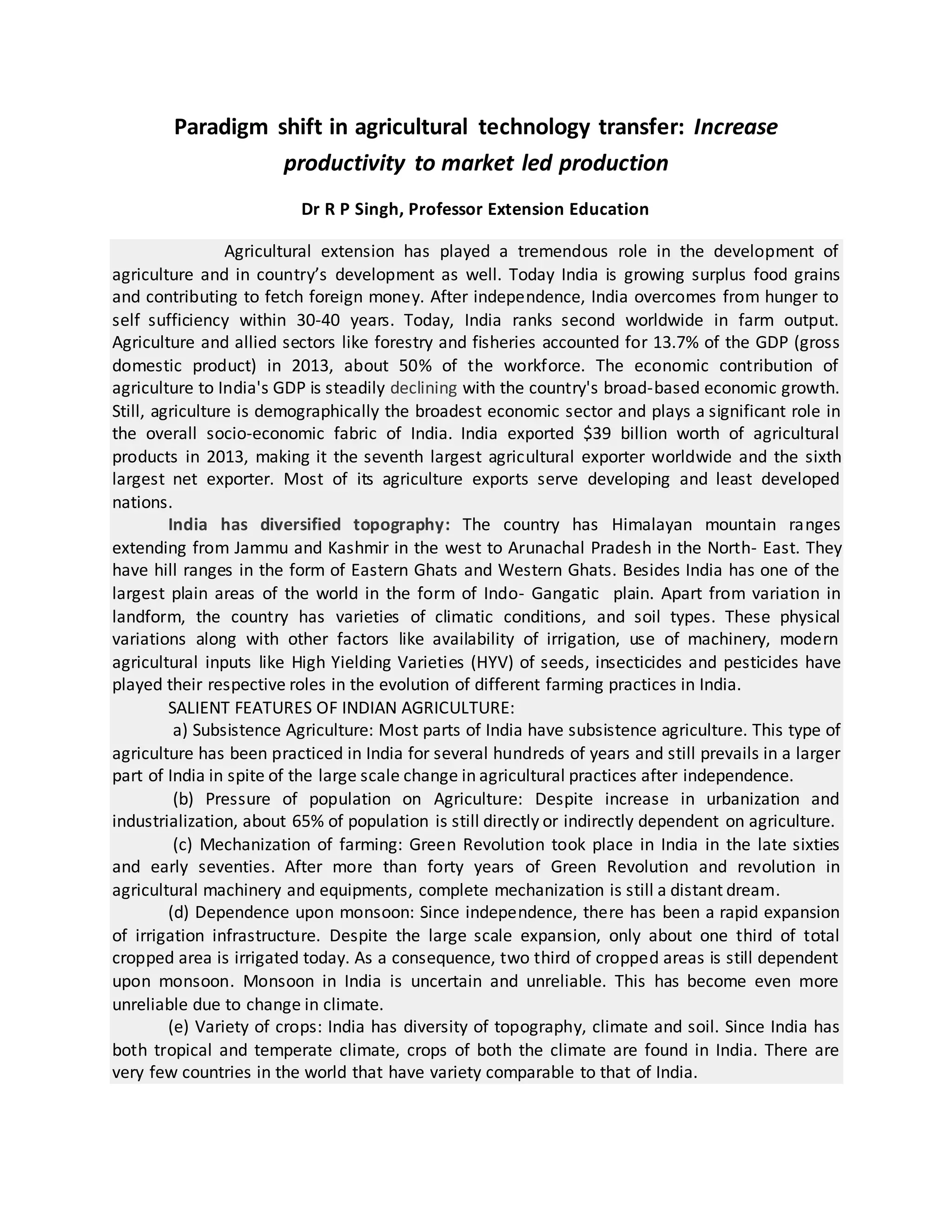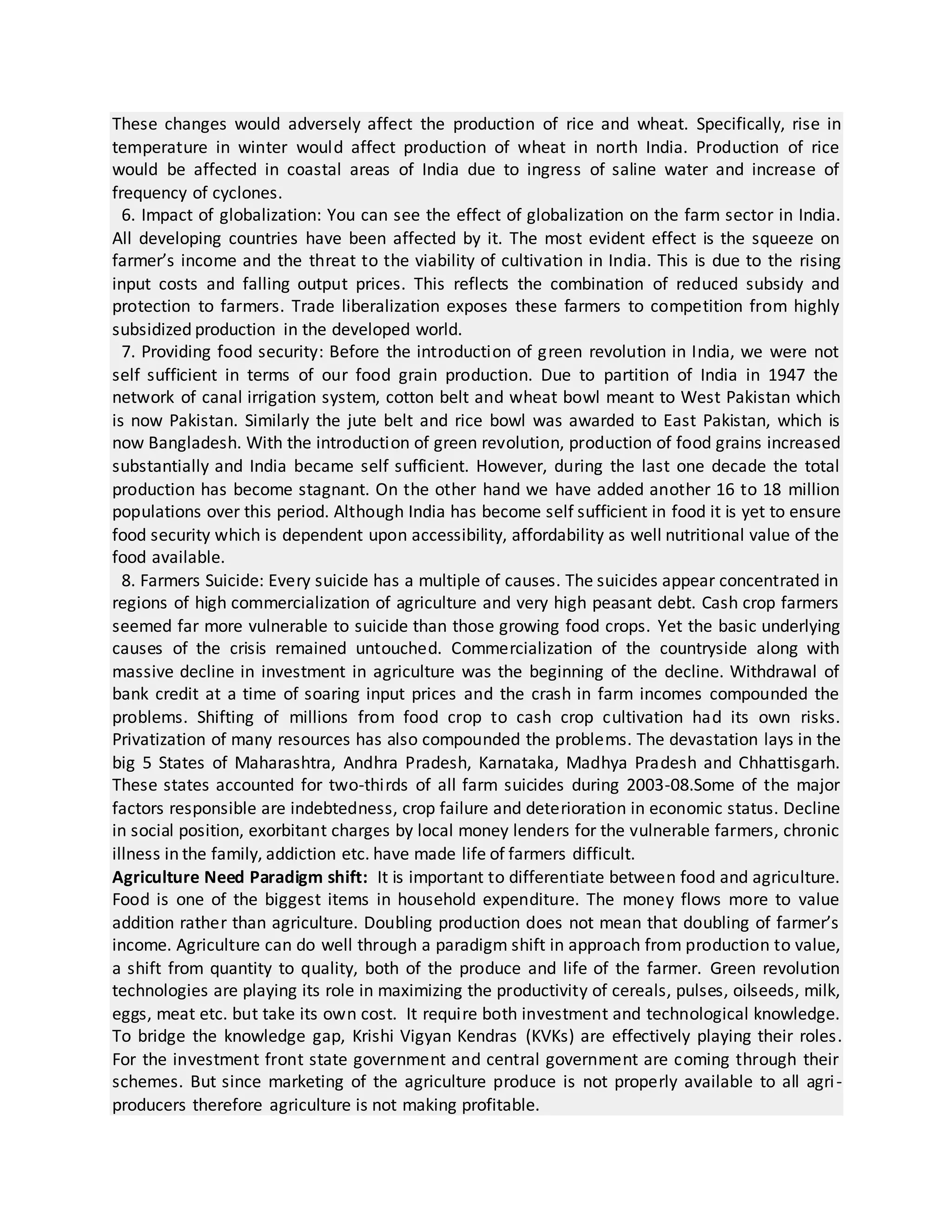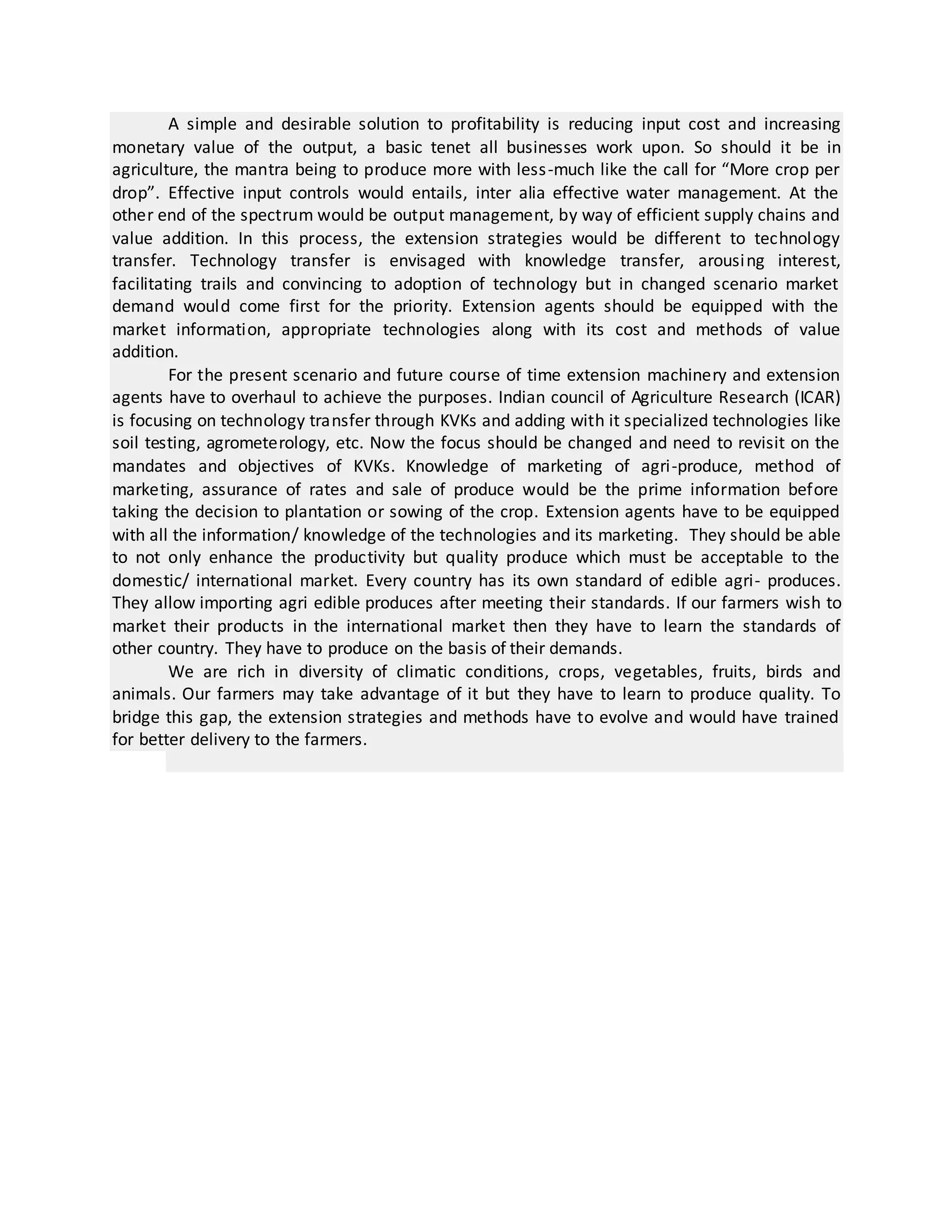The document discusses the evolution and current challenges of agriculture in India, highlighting its economic significance, demographic importance, and the shift from subsistence agriculture to market-led practices. It points out long-standing issues like stagnation in crop production, high input costs, soil exhaustion, and the adverse effects of climate change and globalization, as well as the necessity for a paradigm shift in agricultural practices focusing on value addition rather than solely on production quantity. It emphasizes the need for improved knowledge transfer, market awareness, and efficient supply chains to enhance profitability and align production with both domestic and international standards.



